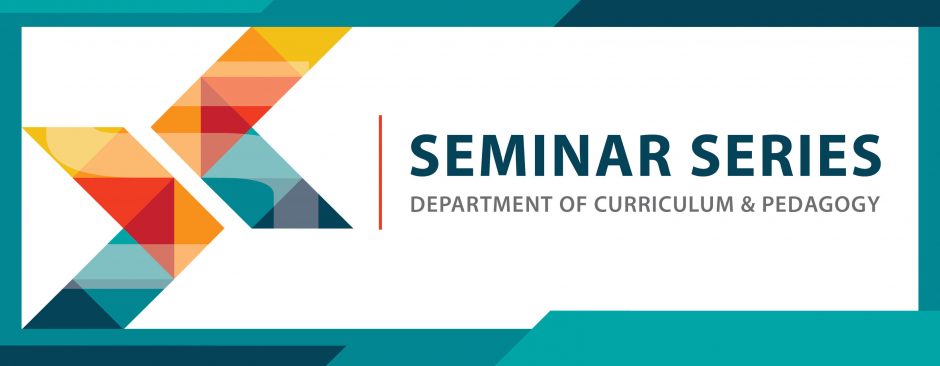
Dr. Paloma Palau Pellicer | University of Jaume, Castellon, Spain
Dr. Joaquín Roldán | University of Granada, Spain
Friday, October 28, 2022 | 12:30 – 2:00 pm (PST) | Hybrid, Scarfe 310 & Zoom
Faculty Host: Dr. Rita Irwin
View Seminar Poster
Abstract
We want to share our inquiries into a paradoxical conception of art and education. In particular, we consider how artistic thought and especially artistic creation can be recognized as specific teaching methods, capable of generating forms of aesthetic thought and action that do not need a verbal translation yet they can also be pedagogically expressed in the different languages of the arts.
This is not a new idea at all. But if we consider that treating the arts as a method, especially in the educational field, has often led to betting exclusively on the processes and the disregard of the results as unnecessary or secondary, then our approach does become paradoxical and innovative: for us artistic learning must lead to a new work of art, even more: artistic learning must be triggered by one (or several) works of art. Fundamentally because if the result of the learning process does not produce aesthetic experiences, we will hardly be able to transmit to our students the fascination, or the poetic depth of the symbols that can be built through the arts, their lives, and the rest of cultures and human beings.
The difference with other approaches is that proposing artistic creation as the main method goes far beyond classical approaches in which creation was the practice of a theory, copying as an exercise (academy), or as a discipline integrated into the teaching of art (DBAE), or a disposable language exercise (Bauhaus).
We start from a constructionist approach (Papert, Mitchell, et al) and based on the visual arts (Marín-Viadel and Roldán) from which we will discuss the role that words can have in the teaching and learning process of arts (sometimes an obstacle). This methodology has been developed by our research team in three contexts: schools and formal education in Granada (Spain), museums, and one project of education for development in peripheral neighborhoods of Tegucigalpa (Honduras).
Short Bios
Dr. Paloma Palau Pellicer, University of Jaume, Castellon, Spain
Dr. Paloma Palau Pellicer is Associate Professor of Art Education in the Faculty of Humanities and Social Sciences at the University of Jaume I in Castellon, (Spain). Her interests include Artistic Methodologies of Teaching in Art Education, Arts-Based Research, Visual A/r/tography, and Theory analysis and criticism of Fine Arts. She serves as Coordinator of the visual arts specialty of the Teaching Secondary, Middle and High School Education Master’s degree. Vice-president of the Valencian Association of Art Critics from 2015-2018. She has held national and international stays at the National University of Lanús, Argentina (2008), the Université Paris 3-Sorbonne Nouvelle (2010) and the University of Granada (2013 and 2016).
Dr. Joaquín Roldán, University of Granada, Spain
Dr. Joaquín Roldán is a visual artist (sculpture, photography, site installations, drawing, and participatory art) and Associate Professor from 1999 to the present in both the Faculty of Fine Arts and School of Education at the University of Granada (Spain). He was awarded as Fulbright Visiting Scholar at the Massachusetts Institute of Technology, School of Architecture in 2015 to research the use of images in teaching/learning methodologies, especially through photography and the possible uses of visual discourses in research. He coordinates a Master’s Degree in Visual Arts and Education at the University of Granada and participates in different research programs Museums (Art for learning Learning Art at Museums). Along with his research group in Granada, his research has been focused on the field of art-based research methodologies, a/r/tography, and visual research for the past decade. His research interests at this time focus on the development and characterization of visual research tools as well as strategies to integrate visual research in academia. The use of images and artistic strategies in the field of academic research is a discipline of recent systematization.